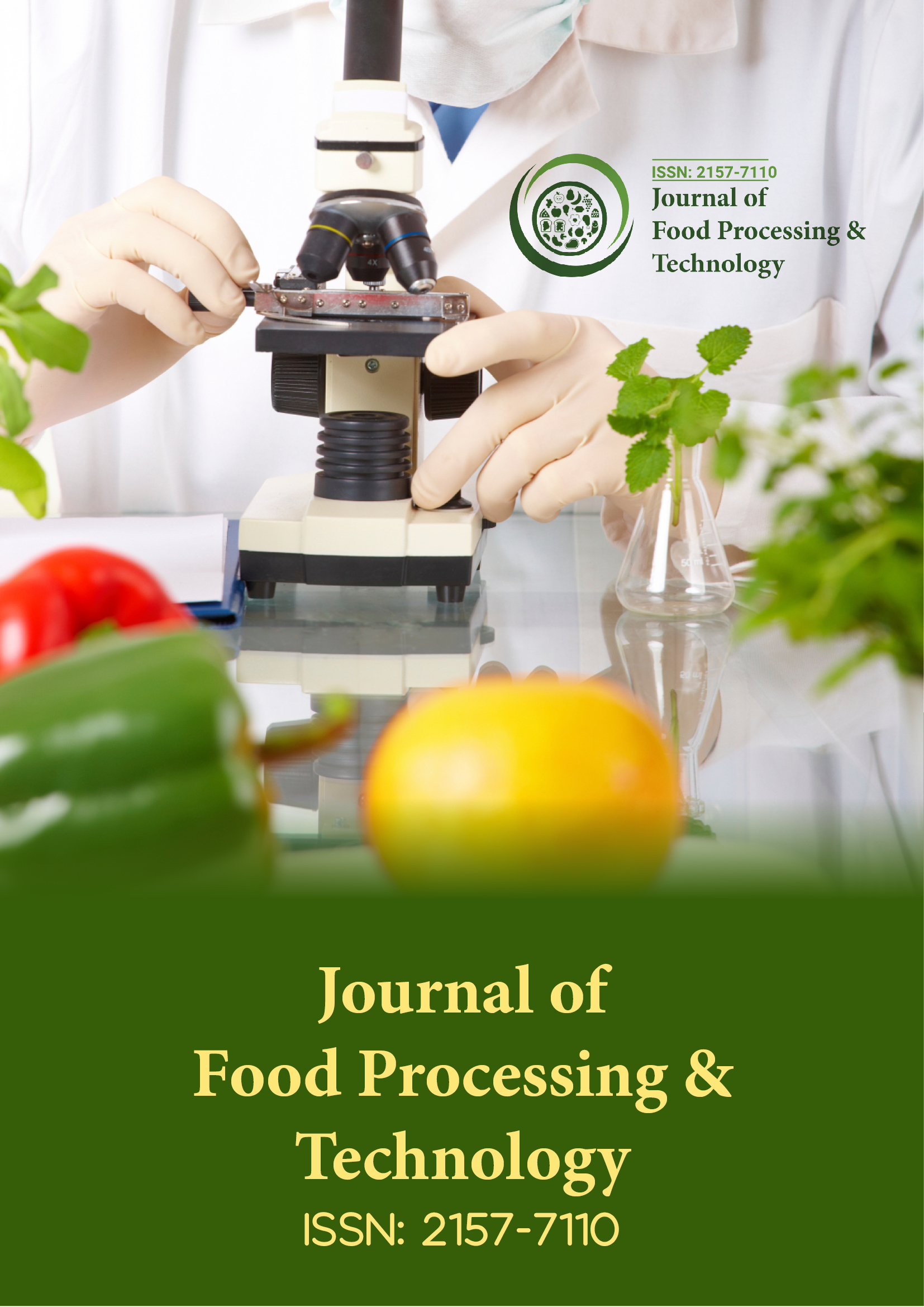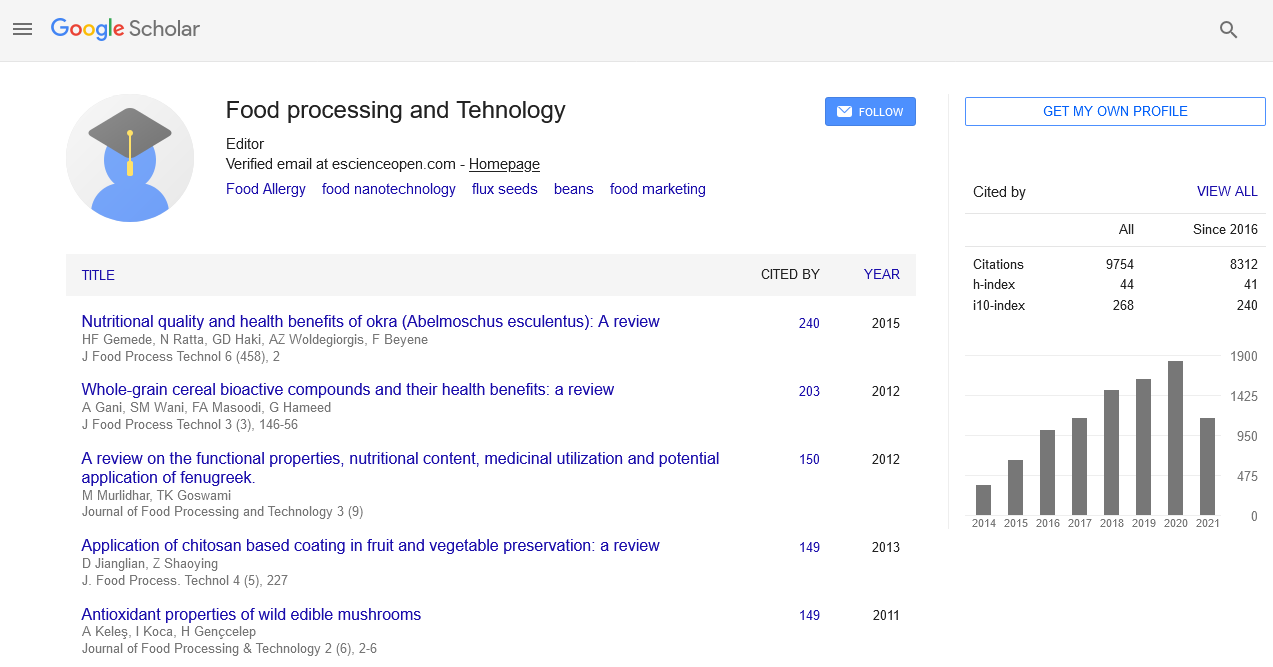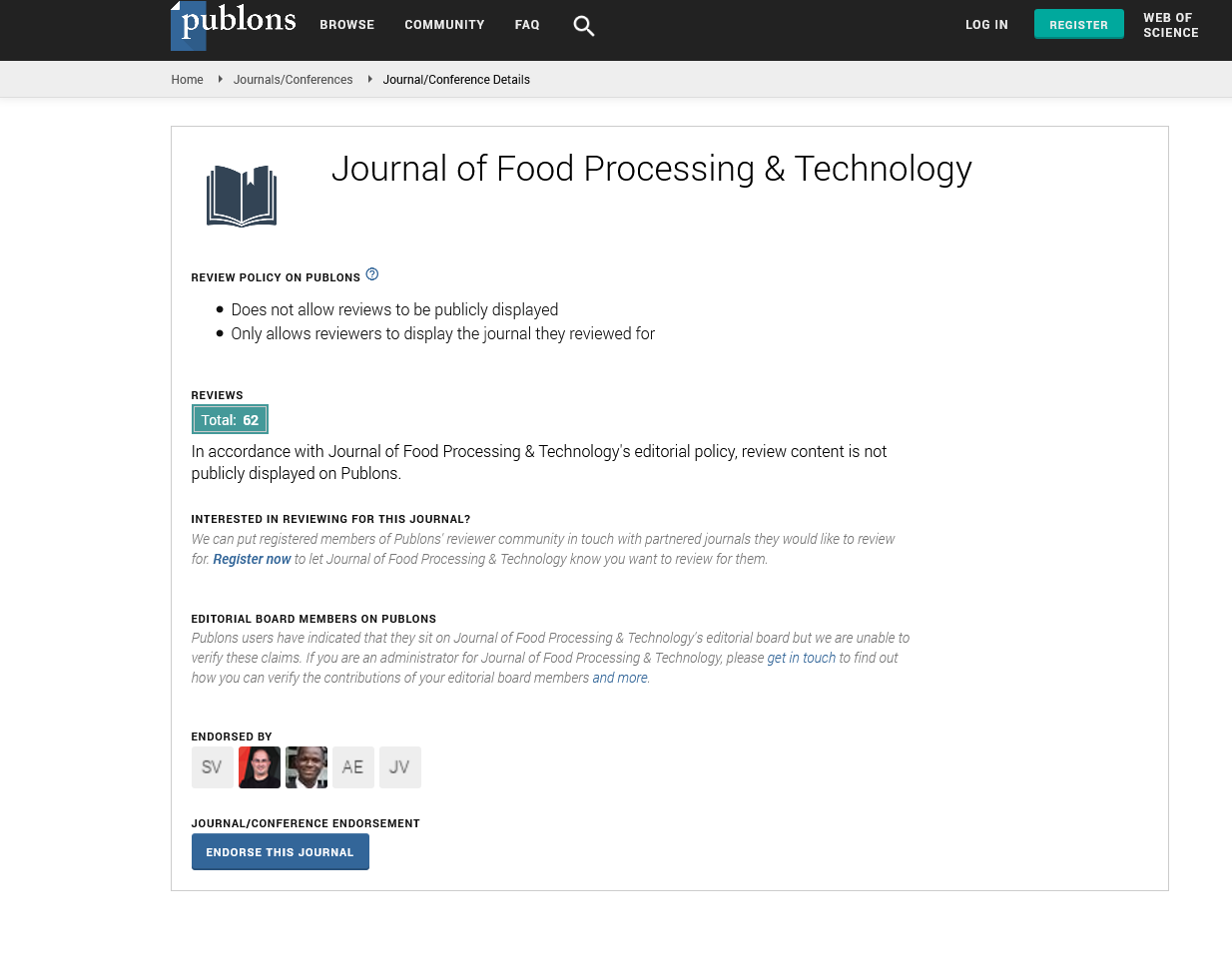Indexed In
- Genamics JournalSeek
- Academic Keys
- JournalTOCs
- China National Knowledge Infrastructure (CNKI)
- Access to Global Online Research in Agriculture (AGORA)
- Centre for Agriculture and Biosciences International (CABI)
- RefSeek
- Directory of Research Journal Indexing (DRJI)
- Hamdard University
- EBSCO A-Z
- OCLC- WorldCat
- Scholarsteer
- SWB online catalog
- Publons
- Euro Pub
- Google Scholar
Useful Links
Share This Page
Journal Flyer

Open Access Journals
- Agri and Aquaculture
- Biochemistry
- Bioinformatics & Systems Biology
- Business & Management
- Chemistry
- Clinical Sciences
- Engineering
- Food & Nutrition
- General Science
- Genetics & Molecular Biology
- Immunology & Microbiology
- Medical Sciences
- Neuroscience & Psychology
- Nursing & Health Care
- Pharmaceutical Sciences
Comparative analysis of craft beer brewed with whole wheat bread as an adjunct in different brewers styles
6th International Conference on Food Technology and Nutrition
March 21-22, 2024 | Paris, France
Carlos Mart�?n Lobera
E.T.S. Agricultural Engineering. University of Valladolid, SPAIN
Keynote: J Food Process Technol
Abstract:
Beer is one of most widely consumed alcoholic beverages in the world. In 2021, the volume produced worldwide was approximately 1.86 billion hectoliters. Depending on the type of brewing method, it can be classified in Lager (low fermentation) and Ale (top fermentation). On one hand, Ale beers are also well known and widely consumed; some examples of this style are Indian Pale Ale and Weissbier. On the other hand, a United Nations analysis estimates that 931 million tons of food are wasted each year by households, retailers, and the food industry, with bread being one of the main categories of f wasted food. Because of both greenhouse gasemissions and billions of dollars lost annually, surplus bread has been a major challenge faced by governments, businesses, charities, and individuals with the aim of halving the quantities and impact of global bread waste, and food waste in general, by 2030. Among the different types of bread, we can find whole wheat bread, which is a major source of starch and insoluble dietary fiber. It also provides protein, minerals, and complex B vitamins. To find a use for this waste, this study seeks the substitution of a fraction of the malt for whole wheat bread in different brewer´s styles.
Biography :
Carlos Martín Lobera has his expertise in oenology, especially in fermented beverages such as wine and beer, and passion in improving the brewing processes. His research focuses on the incorporation of bread as an adjunct in the craft beer production, as a doctoral student at the University of Valladolid. Graduated as an Agricultural Technical Engineer and with a degree in Oenology from the University of Valladolid, he has built this line of research after years of experience, as director of an important agri-food product certification entity, and as a professor at the University of Valladolid, since 2013. Among his most notable merits, is the accreditation of the second sensory laboratory in Spain, according to the UNE EN ISO 17025:2017 regulations, in 2017.


